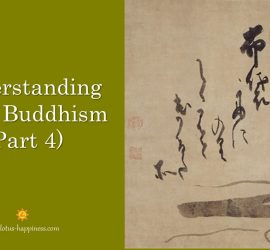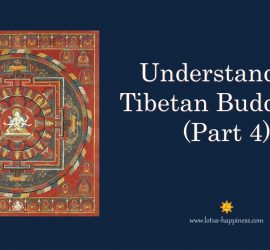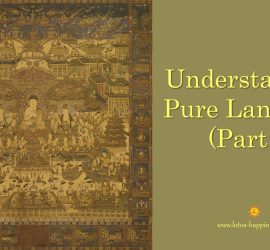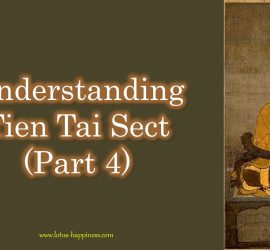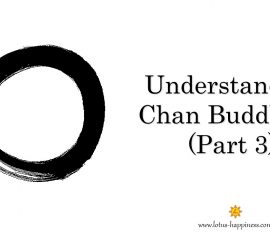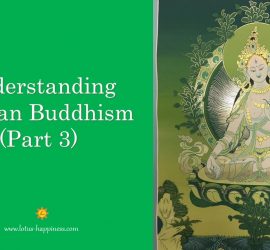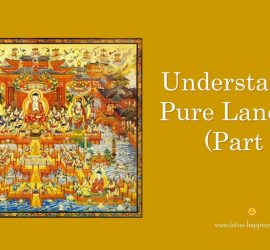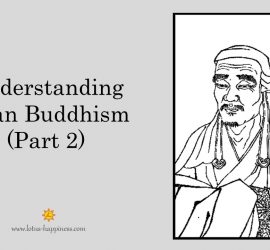Understanding Tien Tai Sect (Part 5) Ten Positions Achieved in Cultivation Further to the doctrine of Identity in Six Degrees, Tien Tai sect relates it to the Ten Positions or Stages achieved in the cultivation of Buddhahood. They are: First Stage of Ordinary Being [凡夫位] — equivalent to Identity in […]
Buddhist Sects
Understanding Chan Buddhism (Part 4) Development of Chan sect after Sixth Patriarch After the Sixth Patriarch. the Chan sect spread out into two main branches headed by: Huai Jang of Nan Yo Mountain [南嶽懷讓] Hsing Sze of Ching Yuan Mountain [青原行思]. Huai Jang’s successor was the great Chan master Ma Tsu [馬祖], who […]
Understanding Tibetan Buddhism (Part 4) Four schools in Tibetan Buddhism Nyingma Literally, Nyingma means “the ancient ones” thus it represents the traditional school in the ancient transmission period. It is originated from the collaboration between King Trison Detsen and the Indian masters, Shantarakshita and Padmasambhava. As the origin of the […]
Understanding Pure Land Sect (Part 4) The Basic Goal of Pure Land Buddhism If one seeks to learn and understand Buddha Dharma, one may follow the customary approach to practice the Three Studies, namely, disciplines or percepts, meditation and wisdom. One is expected to relinquish delusory thought patterns otherwise one cannot […]
Understanding Tien Tai Sect (Part 4) The Practice in Tien Tai Sect The Tien-tai sect emphasized the contemplative insight into mind [觀心]. Contemplation and wisdom are just like legs and eyes respectively. One cannot reach the destination without one of them. There are two aspects in contemplative insight into mind, […]
Understanding Chan Buddhism (Part 3) Chan and Dhyana Though Chan is the Chinese transliteration of Dhyana in Sanskrit, it is not of the same context as Dhyana in its own sense. Dhyana in Sanskrit means high bliss states (or called Samadhi) achieved through the processes of meditation (known as Samatha […]
Understanding Tibetan Buddhism (Part 3) Tibetan Buddhism and Vajrayana In Buddhism, it can be classified into Esoteric Buddhism [密教] and Exoteric Buddhism [顯教]. In Buddhist doctrines, the latter, also known as Vyukta–upadesa in Sanskrit, emphasizes on phenomenological perception, while the former, also known as Guhya–upadesa in Sanskrit, emphasizes on ontological perception. Amongst the ten great sects of Chinese […]
Understanding Pure Land Sect (Part 3) Why Sukhavati, and not other Pure Lands There are many Pure Lands in the ten directions. Why is it that Buddha Sakyamuni specifically directed people to the Western Pure Land, i.e. Sukhavati and extolled the supremely wonderful conditions and environment of that Land […]
Understanding Tien Tai Sect (Part 3) The Perfect Harmony of the Triple Truth [三諦圓融] Based on the Three Universal Truths, Tien-tai believes there is a true state or noumenon, which can be realized through its manifested phenomena. There is no noumenon besides phenomena, and phenomenon itself is noumenon in nature. […]
Understanding Chan Sect (Part 2) The Second Patriarch – Hui Ko The transmission Gatha of Bodhidharma is as follows: My aim in coming to this country Was to transmit the Dharma and liberate all beings A flower of five pedals Cannot fail to fruit. The Gatha predicted that there would […]


